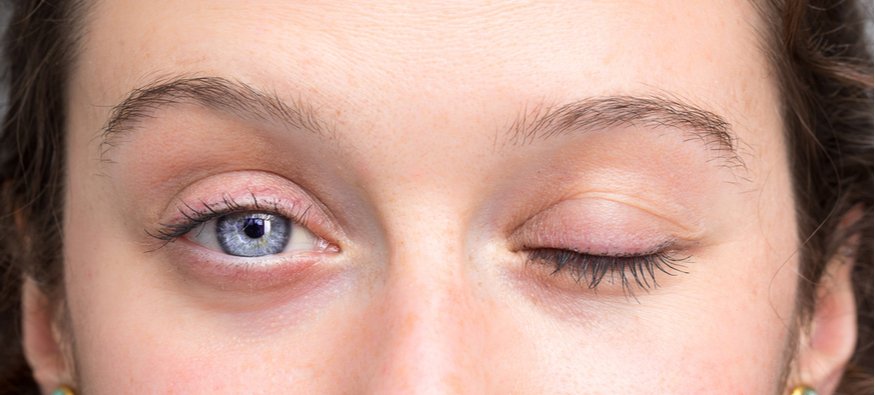Eyelid Surgery to Protect the Eye in Bell’s Palsy Patients

Bell’s Palsy can be a sudden and frightening occurrence that can leave a patient with a paralysis of one side of the face. Typically, there is a droop in the eyebrow, an inability to close the eye, a sagging of the lower eyelid, and a weakness of the corner of the mouth. When not connected to another condition going on in the body, Bell’s Palsy can be diagnosed. If there is no resolution in function of the cranial nerve palsy, surgery may be necessary to protect the eye and restore function.
What is Bell’s Palsy
The 7th cranial nerve provides motor information between the brain and the muscles of facial expression. If Bell’s Palsy occurs, typically it can either resolve completely, partially, or not at all. Depending on the severity of the condition, an oculoplastic surgeon will treat the condition medically with eye drops and ointment prior to considering temporary or permanent surgical solutions.
How is eyelid surgery performed?
There are several technique for both upper and lower eyelid correction:
Gold Weight Insertion
To restore the normal function of the eyelids and allow them to close, a gold weight may be inserted in the upper eyelid during an outpatient procedure. The size and location of the weight must be determined preoperatively to allow for the best chance at protecting the eye and recovery of the lid. In most cases, the gold weight stays in permanently because the nerve signals are not functioning properly to the muscles controlling eyelid closure.
Tarsorrhaphy
In many cases, a small eyelid closing procedure known as a tarsorrhaphy can also be performed. This procedure brings together the inner or outer portions of the upper and lower eyelids to decrease exposure of the eye. A tarsorrhaphy may be performed as a temporary measure or done permanently depending on the severity of the Bell’s Palsy.
Ectropion Repair
Ectropion repair is often also necessary for patients with this condition to restore a sagging eyelid back to its normal position and improve constant tearing. This ambulatory surgery procedure tightens the lid(s) by reinforcing the tendon on the outer corner of the eye. Permanent stitches are placed to achieve the normal appearance and function of the lids.
Brow Lift
Brow droop is common with Bell’s Palsy patients. A brow lift is often necessary to achieve facial symmetry and restore the brow back to its normal position above the eyes. This is usually performed with an incision above the brows within a wrinkle line in the forehead.
Botox Injections
In many cases, the nerve function after Bell’s Palsy will return without any intervention. However, in some cases abnormal nerve pathways may occur causing a condition called aberrant regeneration. Botox injections are indicated in these conditions to relax any abnormal twitching, spasms, or nerve connections.
SightMD offers consultations to evaluate patients with Bell’s Palsy where the eyelids may be involved. Oculoplastic surgery services are available to examine the problem and begin the rehabilitation process. Contact SightMD today to schedule an appointment with one of our doctors to discuss your vision health at one of our convenient locations!


